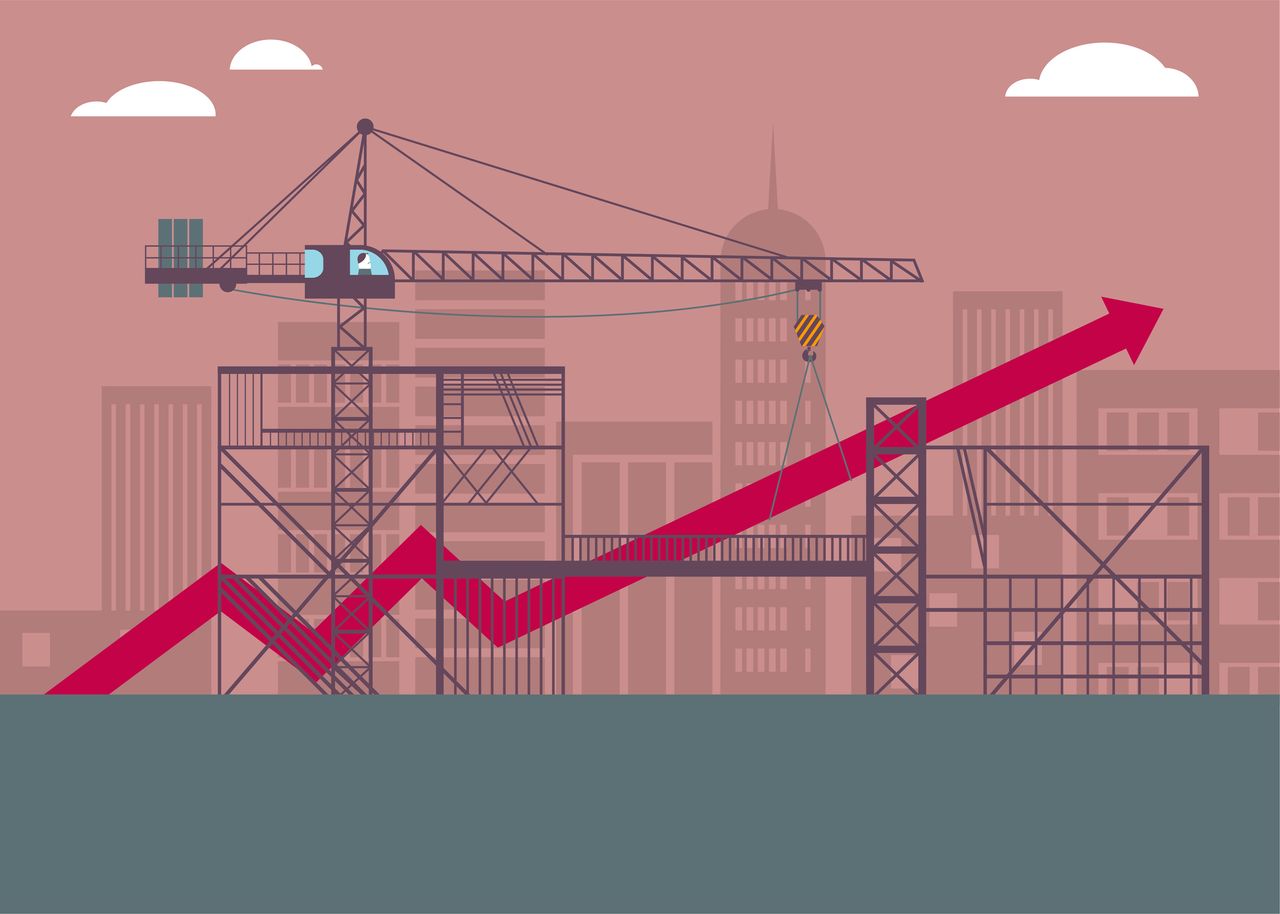
Most institutional investors – whether pension funds, sovereign wealth funds or endowments – don't stick to the traditional stock-and-bond portfolios favored by retail investors.
There is no 60-40 portfolio rule in operation here. Instead, their allocations often include a sizable mix of alternative investments and real assets. While real estate is one well-known example, infrastructure has emerged as another critical pillar.
Infrastructure isn't one of the 11 official Global Industry Classification Standard (GICS) sectors. But it has gained increasing attention in recent years, particularly in the U.S. The 2021 passage of the bipartisan Infrastructure Investment and Jobs Act (IIJA) helped push the theme into the spotlight.
The legislation authorized $1.2 trillion in federal spending on roads, bridges, passenger rail, broadband internet, airports, ports and electrical grid modernization, driving renewed investor focus on infrastructure-linked investments.
What is infrastructure?
There's no single definition of infrastructure, but it's generally understood in two ways.
The first view defines infrastructure as an asset class: investments that own essential physical systems or facilities that provide services critical to the functioning of society and the economy.
Classic examples include power lines, pipelines, roads, railways and water utilities. In recent years, as connectivity and technology have evolved, this definition has expanded to include assets such as cell towers and data centers, both critical to modern communication and information flow.
The second view focuses on investment characteristics. Infrastructure assets are often described as those that produce reliable, steady cash flows from tollbooth-like business models built around their physical footprint.
Think of a pipeline that charges producers to transport oil, a private water utility that bills monthly for service, or a railroad that controls exclusive freight routes. Many of these businesses operate in oligopolies or regulated environments, which limits competition and enhances pricing power.
Taken together, infrastructure is essential services backed by hard assets that deliver stable and predictable income, often through long-term contracts or regulated pricing models. These cash flows typically include built-in escalators that help offset inflation, such as utility rate adjustments or inflation-indexed service agreements.
How can you invest in infrastructure?
Accessing infrastructure assets depends heavily on the type of investor.
Institutional investors often make direct investments in large-scale infrastructure projects. For example, a national pension fund might fund the expansion of an airport terminal or invest directly in a toll road concession via bonds or buying shares.
Retail investors, on the other hand, can access infrastructure more easily through publicly traded securities.
Many infrastructure operators – such as Enbridge (ENB) and Kinder Morgan (KMI) in pipelines, American Water Works (AWK) in wastewater utilities, and Class I railroads such as Union Pacific (UNP) and Canada Pacific Kansas City (CP) – are listed on major stock exchanges.
The challenge, as always, is diversification.
Infrastructure spans multiple sectors, including utilities, energy, industrials, and materials, and increasingly overlaps with real estate, communications, and tech.
Trying to build a diversified infrastructure portfolio from individual stocks can quickly become overwhelming.
To address this, asset managers have launched infrastructure indexes and exchange-traded funds (ETFs) that track them.
These products use transparent, rules-based methodologies to define what qualifies as infrastructure, set portfolio weights, and manage risk.
For retail investors, infrastructure ETFs offer diversified exposure, competitive fees, and the same ease of trading as any other stock.
How we picked the best infrastructure ETFs
We began by screening out actively managed infrastructure ETFs.
Following an index helps keep fees lower, since there's no need to pay a portfolio management team, just index licensing and basic operational costs.
That led us to our first core filter: a reasonable expense ratio of 0.50% or lower.
Infrastructure ETFs are generally more expensive than broad equity funds, especially if they focus on narrower niches, but even within this category, there's a wide range between cost-effective and overpriced options.
Next, we prioritized ETFs with sufficient assets under management (AUM) to ensure long-term viability.
While low AUM doesn't necessarily create liquidity issues, it does increase the risk of fund closure, which can be a headache for investors. We set a high bar of $500 million in AUM to sharply reduce that risk and focus only on funds with meaningful scale and staying power.
Finally, because infrastructure ETFs are typically used as core, long-term portfolio allocations rather than tactical trading tools, we didn't weigh liquidity (like 30-day median bid-ask spreads) as heavily.
This is an asset class meant to complement stocks and bonds with steady income and inflation-linked returns, not serve as a vehicle for short-term speculation.
Data is as of August 11.
- Assets under management: $9.1 billion
- 5-year annualized return: 22.9%
- Expense ratio: 0.47%, or $47 for every $10,000 invested
The Global X U.S. Infrastructure Development ETF (PAVE, $45.50) tracks the Indxx U.S. Infrastructure Development Index and takes a hybrid approach to the theme.
While it includes traditional infrastructure names like utility Sempra (SRE) and railroad Norfolk Southern (NSC), it also tilts heavily toward manufacturers and construction equipment companies such as Deere (DE), Emerson Electric (EMR) and Parker-Hannifin (PH).
As the name suggests, PAVE focuses on infrastructure development, which are the companies building and supplying infrastructure projects, and not necessarily a pure play on owning or operating the assets themselves.
This positioning has helped PAVE outperform most Morningstar peers on a risk-adjusted basis, earning a five-star rating.
However, it also means the fund behaves more like a cyclical equity product, with a low 30-day SEC yield of 0.65% and a greater emphasis on capital appreciation rather than income.
Learn more about PAVE at the Global X provider site.
- Assets under management: $7.8 billion
- 5-year annualized return: 11.8%
- Expense ratio: 0.39%
The iShares Global Infrastructure ETF (IGF, $60.37) tracks the S&P Global Infrastructure Index, a much more traditional infrastructure benchmark. It emphasizes tollbooth-like companies, including industrials, utilities and energy stocks.
U.S.-listed utility stocks such as Southern Company (SO), Duke Energy (DUK) and NextEra Energy (NEE) make up about 40% of the portfolio, while the rest includes international infrastructure operators such as New Zealand-based Auckland Airport (AUKNY) and UK gas and electric utility National Grid (NGG).
Unlike PAVE, IGF focuses more squarely on core infrastructure exposure. That's reflected in its above-average 30-day SEC yield of 2.7%, making it better suited for income-focused investors rather than those seeking capital appreciation.
Learn more about IGF at the iShares provider site.
- Assets under management: $2.8 billion
- 5-year annualized return: 7.0%
- Expenses: 0.47%
There's more than one way to structure an infrastructure index. While S&P's benchmarks may be the most well-known, the STOXX Global Broad Infrastructure Index offers a worthy alternative. And the FlexShares STOXX Global Broad Infrastructure Index Fund (NFRA, $61.99) tracks it.
NFRA currently holds 217 companies and takes a broader, more diversified approach than peers such as IGF.
Instead of emphasizing regulated utilities, its top holdings include the two major Canadian railways, Canadian National Railway (CNI) and Canadian Pacific Kansas City, as well as Waste Connections (WCN) and multiple U.S. and international telecom operators.
Its income profile sits between that of PAVE and IGF, with a 30-day SEC yield of 2.8%. While yield generators like Enbridge are present, the fund's broader scope dilutes the income stream somewhat in exchange for greater sector and geographic diversity.
Learn more about NFRA at the FlexShares provider site.
- Assets under management: $2.9 billion
- 5-year annualized total return: 17.1%
- Expense ratio: 0.30%
Investors looking for U.S.-focused infrastructure exposure with an emphasis on owners of physical assets rather than enablers may prefer the iShares U.S. Infrastructure ETF (IFRA, $50.77) over PAVE.
IFRA tracks the NYSE FactSet U.S. Infrastructure Index and holds 153 companies. Its portfolio is dominated by utilities and industrial stocks, particularly regulated firms like Constellation Energy (CEG) and American Electric Power (AEP) as well as major railroads including Norfolk Southern and CSX (CSX).
IFRA is one of the most affordable options in the category and, with its U.S. bias, has outperformed many of its global peers, earning a five-star Morningstar rating.
Its 30-day SEC yield of 1.8% isn't the highest, but historically the bulk of IFRA's returns have come from capital appreciation.
Learn more about IFRA at the iShares provider site.
- Assets under management: $575.9 million
- 5-year annualized total return: 12.4%
- Expense ratio: 0.40%
Index providers often license their benchmarks to multiple asset managers. The SPDR S&P Global Infrastructure ETF (GII, $68.59) GII is State Street's version of the same S&P Global Infrastructure Index tracked by iShares' IGF.
Both ETFs are nearly identical in holdings and structure. The basic differences are cost and scale.
GII has a slightly lower expense ratio – 0.40% vs 0.42% for IGF – though this gap is unlikely to move the needle unless you're investing large sums. GII also has lower assets under management but still maintains a sustainable scale for long-term investors.
With a 30-day SEC yield of 2.7%, GII offers the same income profile as IGF. Choosing between the two is essentially a coin flip. Decide based on brand preference or platform availability.
Learn more about GII at the SPDR provider site.







